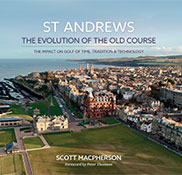GOLF CHAMPIONSHIPS ON SMGD COURSES:
At Close House – Colt Course. Sept 2017. A prestigious European Tour Championship hosted by Lee Westwood.
Broadcast worldwide from Royal Wellington Golf Club, NZ. October 2017. WOW!
The legacy continues.
Co-hosted at the award-winning Millbrook Resort near Queenstown, NZ. 2014 – 2023.
The Cost of Building a Golf Course
It’s one of the most difficult questions to answer, but one of the most commonly asked, how much does it cost to build a golf course? The answer depends on a variety of factors; three of the most important being, what type of course the client wants, what type of land the course is to be built upon, and the competency of the golf course architect.
Construction costs are also determined by the economic climate and industry status. Recently, with low interest rates and a lull in the building of golf courses, the market place is ripe for new developers to get excellent loans and very competitive bids from architects and construction companies. While variables like insurance and petrol/diesel prices are unpredictable, mere competition will push most firms to bid low and drop their margins just to keep people and equipment working during lean times. Equally, suppliers of materials for expensive billing items such as drainage and irrigation are more focused on turnover than stockpiling.
| Construction Items |
Minimalist Course |
Average Course |
Up-Scale Course
|
| Mobilisation | 10,000 | 35,000 | 75,000 |
| Layout, Staking, Civils | 10,000 | 30,000 | 120,000 |
| Erosion Control | 0 | 25,000 | 150,000 |
| Clearing and Grubbing | 3,000 | 35,000 | 280,000 |
| Selective Clearing | 0 | 54,000 | 240,000 |
| Topsoil strip | 40,000 | 150,000 | 300,000 |
| Rock Blasting | 0 | 15,000 | 150,000 |
| Earthmoving | 0 | 375,000 | 750,000 |
| Shaping | 75,000 | 150,000 | 300,000 |
| Topsoil Replacement | 40,000 | 150,000 | 240,000 |
| Storm Drainage | 10,000 | 75,000 | 500,000 |
| Golf Drainage | 20,000 | 100,000 | 150,000 |
| Irrigation + Pumpstation | 130,000 | 345,000 | 910,000 |
| Greens (11,150 sq.m.) | 36,000 | 190,000 | 600,000 |
| Tees (11,150 sq.m.) | 30,000 | 60,000 | 100,00 |
| Bunkers | 17,000 | 52,000 | 84,000 |
| Cart paths | 0 | 112,000 | 530,000 |
| Seedbed Prep | 50,000 | 95,000 | 125,000 |
| Grassing (Seed/Sprigs) | 50,000 | 120,000 | 110,000 |
| Grassing (Sod) | 0 | 50,000 | 200,000 |
BUILD TOTAL (US $) |
521,000 |
2,218,000 |
5,814,000 |
Source: Golf Course Builders Association of America, ASGCA, and Denis Griffiths. 2004.
Costs can be kept to a minimum if the client has a good site; gently rolling with good drainage, and starts the job on time with all permits in hand. An architect can quickly identify the best land for a golf course and following their advice should alleviate having to move lots of earth, installing extensive drainage, time delays, or requiring more resources to get the job completed in time for critical seeding windows or a grand opening.
Specific cost cutting measures include reducing the number of bunkers, especially those requiring expensive speciality sands, minimising the length of cart paths and using seed other than sod are good options. Additionally, if USGA style greens are to be designed, reducing green size is a cost cutting method. Reducing spending on items such as final grading however may cost an owner more in course maintenance in the long run; so judicial corner cutting is crucial.
Some new owners spend tremendous amounts of money on large trees in an attempt to create a ‘mature’ look for new projects, particularly those using the course to sell real estate, but owners can save more money, and often get better long term results, by planting smaller trees with a drip irrigation system. Equally, clustering trees rather than lining fairways not only looks better, but reduces the number of trees required. Landscaping is a cost that can make or break the look and economic viability of a project.
Reducing the size of the course has an impact on the cost of building and maintaining a course- particularly when land is at a premium. Designing a Par 70 or 71 course instead of a Par 72 may allow an architect to avoid using a difficult, steep, or environmentally sensitive piece of land and this may save up to NZ $400,000! Additionally, the course will play quicker and if it’s a ‘pay and play’ course, an owner may get more groups through on busy days and make more money- all this affects the bottom line.
AWARDS
 Winner
Winner
Excellence in Compliance Award
Royal Wellington Golf Club
 Scott awarded by GEO as a Sustainable Golf Champion
Scott awarded by GEO as a Sustainable Golf Champion
PUBLICATIONS
 St Andrews
St Andrews
The Evolution of the Old Course
by Scott Macpherson
TESTIMONIALS
"The course looks absolutely stunning and every single golfer, without exception, has said how wonderful it is and that the views are exceptional. Most of that is down to Scott's own design, imagination and flair and I am very grateful for all the effort he put into making the course so special."
Graham Wylie, Owner of Close House Hotel and Golf. England, UK



